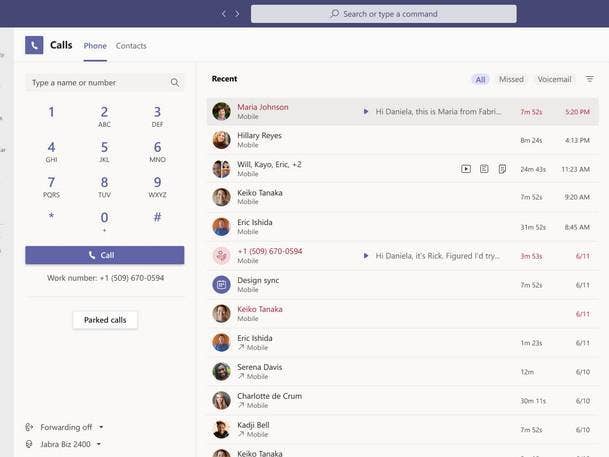Microsoft Says Teams Issue Sending Calls ‘Straight To Voicemail’
The company says it is seeking to fix the issue with Teams calling on Friday, the latest in a series of issues to strike users of the Teams collaboration app.

Microsoft on Friday said it was seeking to remediate an issue with the Teams calling service that was sending calls straight into some users’ voicemails.
The Teams collaboration app can be used for VoIP audio calls between Teams users, while Microsoft also offers an option to add a full phone replacement within Teams, which uses the Public Switched Telephone Network.
[Related: Worldwide Microsoft Teams Outage Update: Platform ‘Performing As Expected’]
At about 3 p.m. Eastern Time on Friday, the Microsoft 365 Status Twitter account disclosed that Microsoft was investigating reports of an issue that was sending incoming calls “straight to voicemail” in Teams.
Subsequently, the account tweeted that Microsoft has “isolated a recent change that has caused portions of infrastructure to send some Microsoft Teams calls straight to voicemail.”
“We’re continuing to monitor the rollback to determine if this action has remediated impact as intended,” the account tweeted at 5:41 p.m. Eastern Time. “In parallel, we’re investigating additional options to restore the functionality.”
In response to an inquiry from CRN, a Microsoft spokesperson said Friday that “we’re working to resolve the issue some customers may be experiencing where incoming calls go directly to voicemail.”
We're continuing to monitor the rollback to determine if this action has remediated impact as intended. In parallel, we're investigating additional options to restore the functionality. More details are available under TM261472 in the admin center.
— Microsoft 365 Status (@MSFT365Status) June 11, 2021
The Teams phone system only infrequently sees issues, and “in my experience they are limited to a small subset of customers,” said Zach Saltzman, senior director for the Microsoft platform at Carlsbad, Calif.-based FMT Consultants, a Microsoft Gold partner.
“I would say customer impact really depends on how critical phone systems are to the specific business. These days general phone calls seems to occur less frequently than Teams/Zoom meetings and IM chat,” Saltzman said in an email to CRN.
“For FMT, as a CSP, we keep our clients apprised of the situation and help them with the status portals so they can monitor the issues,” he said. “If their issues linger after Microsoft resolves the issue, we escalate to Microsoft support on their behalf.”
Microsoft has been pushing forward on the development of new features for Teams calling as the company has been seeking to compete more vigorously with existing phone system options.
The Teams calling problem is the latest in a string of issues that Microsoft’s Teams collaboration platform has experienced in recent months.
Along with Teams outages, which included a worldwide outage in mid-March and two major outages in April, the Teams app has also periodically been seeing smaller issues that have impacted users. For instance, Microsoft reported two separate Teams issues in February, including delays in receiving chats and issues with joining meetings.
Teams had more than 145 million daily active users as of late April, the company disclosed at the time.
Over the past few years, Microsoft has gotten “dramatically better” at updating partners “as soon as they are aware of an issue and listing when they expect the issue to be solved—or at least provide a status,” said Rosalyn Arntzen, president and CEO of Redmond, Wash.-based Amaxra, a Microsoft Gold partner.
Microsoft also provides a way for customers to report if they still have an issue even after the problem is resolved, she said.
“As a partner, we also can subscribe to critical alerts so I even get alerted on my phone/watch if there is some kind of outage big enough to impact multiple customers. This allows us to be proactive and reach out to our customers,” Arntzen said in an email to CRN. “Having Microsoft be so transparent when issues like this occur—what steps they are taking and any interim fixes—allows us to communicate this to our customers so they can best manage until everything is back as it should be.”
Ultimately, this is “quite different” from when the solution provider first started working with Office 365, back around 2012 to 2013, she said.
Then, “it was very hard to know what was occurring or even who to contact if there was an issue,” Arntzen said. “Now the information is there and they fix things as quickly as possible—but even if they can’t, they are transparent in what they are doing and any interim steps customers can take.”